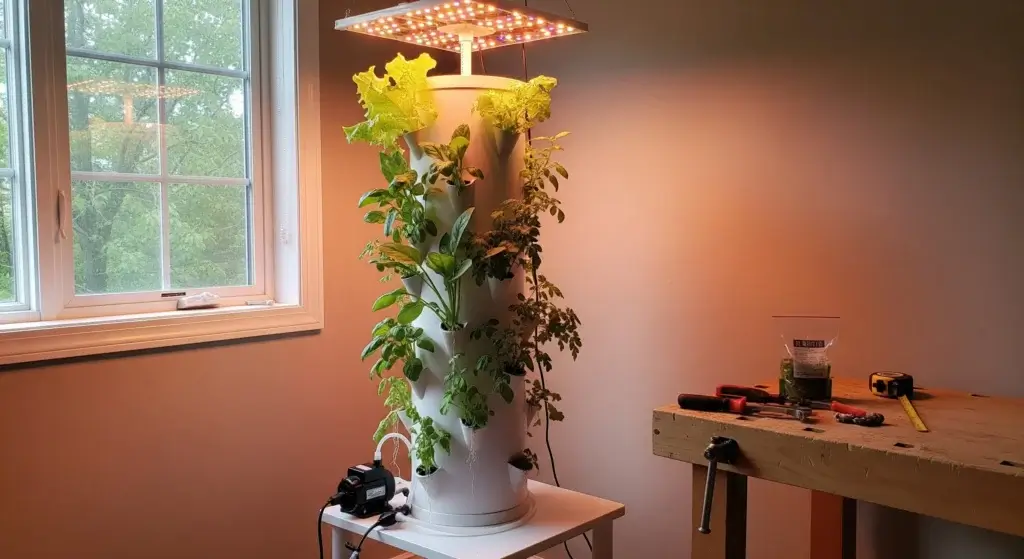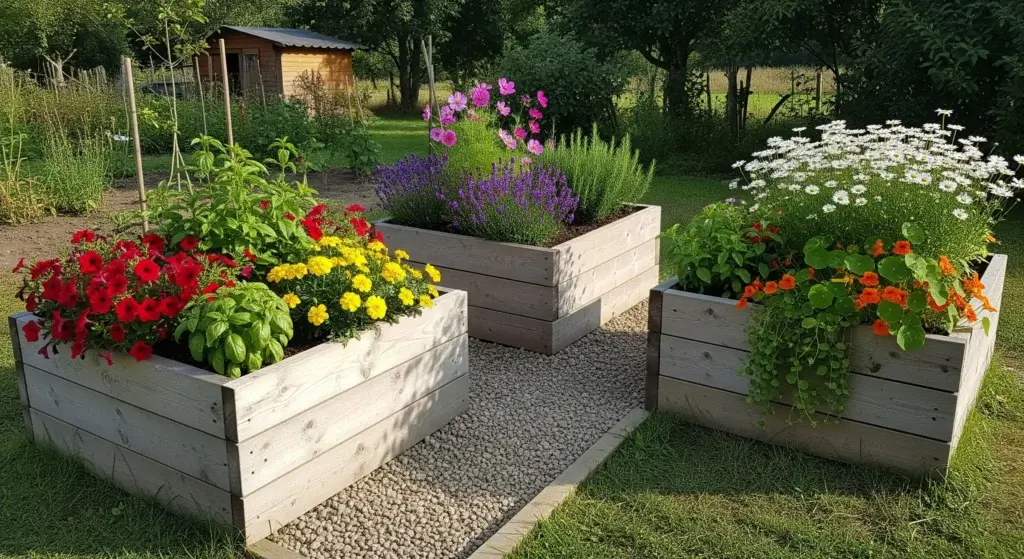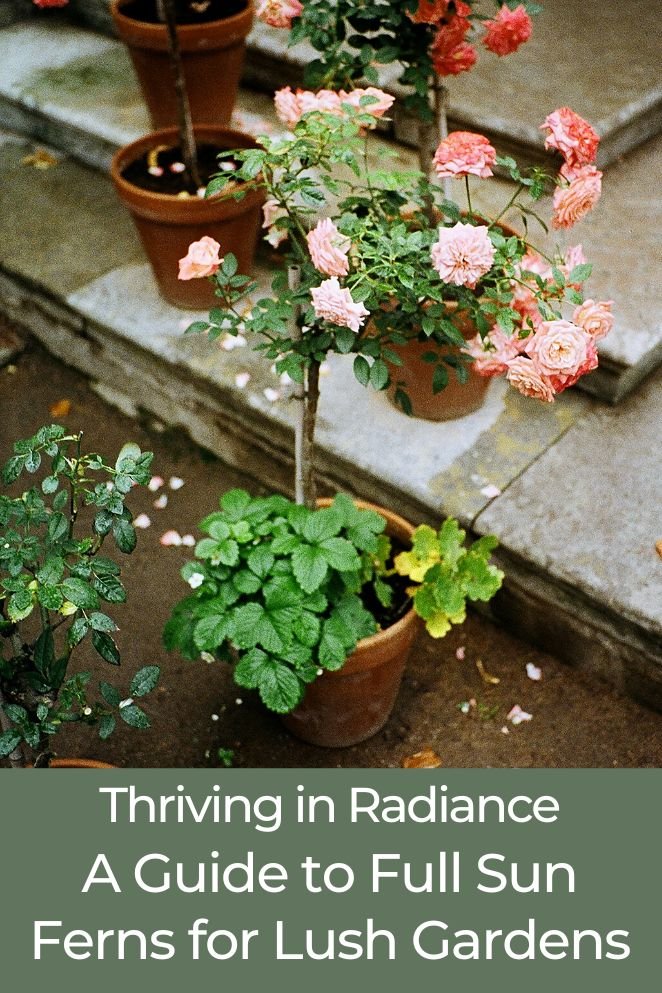
Watering your outdoor potted plants can be a time-consuming task, especially during hot and dry periods.
To ensure your plants receive adequate water without constant monitoring, creating a customized watering system can be a game-changer.
In this guide, we will explore the step-by-step process of building a self-watering system for outdoor potted plants, along with tips for customization, maintenance, and the benefits of a DIY watering system.
Materials and Tools
Before getting started, gather the following materials and tools:
- Large outdoor containers
- Water reservoir (e.g., plastic storage totes)
- PVC pipes or tubing
- Drill with bits
- Landscape fabric
- Potting mix
- Plants
- Watering spikes or emitters
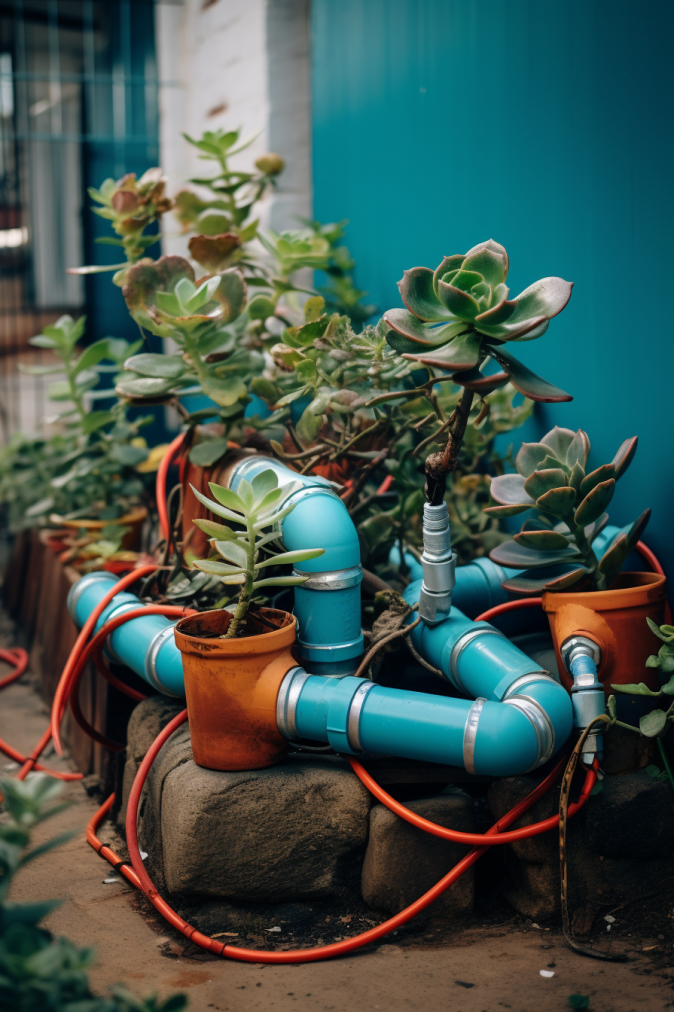
Step-by-Step Instructions
Prepare the reservoir
Start by placing the water reservoir at the base of the container.
This reservoir will serve as the water source for the self-watering system. Ensure it is positioned securely to avoid any leaks.
- Read also: A Guide to DIY Plant Watering Globes
- Read also: A DIY Potted Plant Watering System Guide
Create the watering mechanism
Cut the PVC pipes or tubing to the desired length, keeping in mind the depth of the container.
These pipes will serve as the conduits for water to reach the plant roots.
Use a drill to create small holes along the length of the pipes. These holes are essential for allowing water to seep into the soil.
Assemble the system
Carefully position the PVC pipes or tubing within the container, making sure they reach the bottom of the pot.
This ensures that water can effectively reach the roots of your plants.
To prevent soil from clogging the holes in the pipes, cover them with landscape fabric.
This step ensures a smooth flow of water through the system.
Add potting mix and plants
Fill the container with a suitable potting mix, leaving enough space for planting.
Once the potting mix is in place, carefully plant your chosen greenery.
Before proceeding, confirm that the PVC pipes or tubing are properly positioned within the container, reaching down to the roots.
Connect the reservoir
Now, it’s time to fill the reservoir with water. Ensure that the reservoir is securely connected to the PVC pipes or tubing.
This connection enables a continuous flow of water to the soil as needed.
The self-watering system operates by allowing the soil to draw water from the reservoir, ensuring your plants remain consistently hydrated.
Customization Tips

Opt for specialized watering pots
For larger plants and trees, explore the use of a GrowOya watering pot.
These pots come equipped with a built-in reservoir and water emitters, ensuring efficient and targeted hydration for your greenery.
This can be particularly beneficial for substantial plants that may require more water.
Consider capillary mat systems
Capillary mat systems offer another effective customization option.
By placing a capillary mat in the container, you create a wicking system that draws water up into the soil.
This helps maintain consistent moisture levels and provides an additional layer of control for your self-watering setup.
Explore drip irrigation
Drip irrigation systems are versatile and can be adapted for outdoor potted plants.
By incorporating drip emitters into your self-watering design, you can precisely control the flow of water to each plant.
This customization is especially useful for large or closely spaced arrangements, ensuring every plant receives the right amount of hydration.
Adjust reservoir size
Depending on the size of your container and the water needs of your plants, consider adjusting the size of the water reservoir.
Larger containers or plants in sunny locations may benefit from a larger reservoir to accommodate increased water demand.
Choose a suitable potting mix
Customize the potting mix based on the water retention needs of your plants.
Some plants prefer well-draining soil, while others thrive in moisture-retaining mixes.
Tailoring the potting mix to your specific plant requirements enhances the overall effectiveness of your self-watering system.
Monitor sun exposure
Assess the amount of sunlight your plants receive and adjust the watering system accordingly.
Plants in sunnier locations may require more frequent watering, while those in shaded areas may need less.
Customizing the watering schedule based on sunlight conditions optimizes the efficiency of your self-watering setup.
Maintenance and Troubleshooting
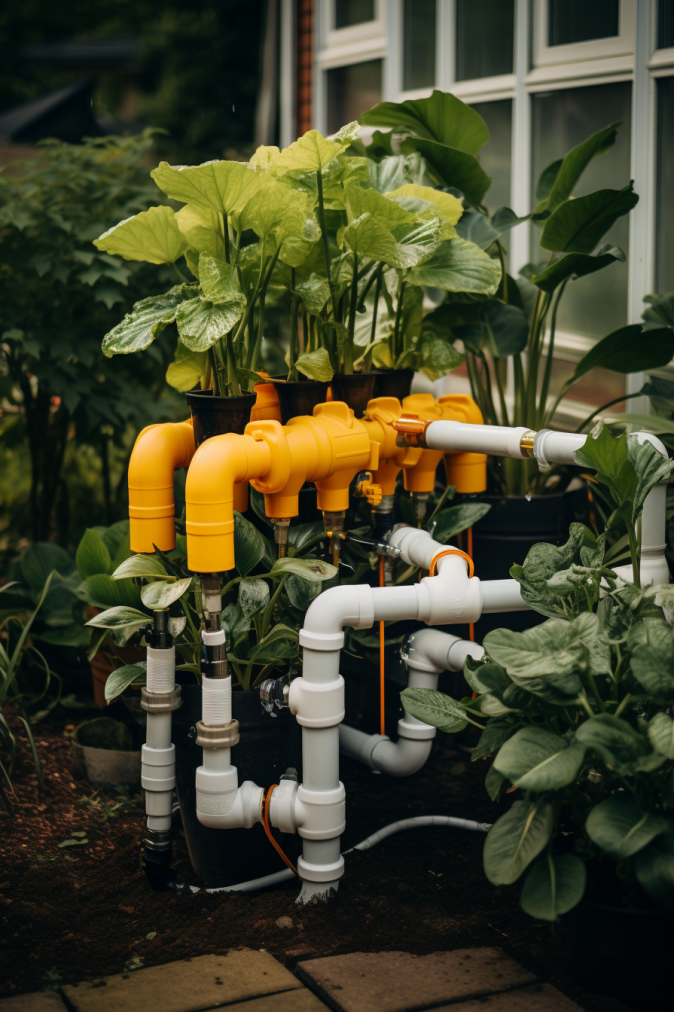
Inspect and refill the reservoir regularly
Regularly check the water level in the reservoir to ensure it consistently provides an adequate water supply for your plants.
This step is crucial for preventing dehydration and maintaining optimal hydration levels.
Refill the reservoir as needed, especially during hot or dry periods when plants may require more water.
Clean watering mechanism
Periodically clean the watering mechanism, including the PVC pipes or tubing and any associated components, to prevent clogging.
Over time, soil particles and debris may accumulate, impeding water flow.
A clean system ensures proper water distribution to all parts of the container, promoting even hydration for your plants.
Inspect capillary mat systems
If utilizing a capillary mat system, regularly inspect the mat for cleanliness and effectiveness.
Clean or replace the capillary mat as needed to maintain its wicking capabilities.
Ensuring the capillary mat is free from debris enhances its ability to efficiently draw water into the soil.
Monitor drip Irrigation components
For systems incorporating drip irrigation, inspect the emitters for blockages.
Over time, mineral deposits or debris may accumulate, affecting the efficiency of water delivery.
Clean or replace any clogged emitters to maintain a consistent and controlled flow of water to your plants.
Check for soil saturation
Be mindful of soil saturation levels. If the soil consistently feels overly wet, it may indicate overwatering.
Adjust the watering schedule or reduce the water supply to prevent potential issues such as root rot.
Evaluate plant health
Monitor the overall health of your plants. Signs of overwatering or underwatering include wilting, yellowing leaves, or root rot.
Adjust the watering system based on the specific needs of each plant, taking into consideration factors such as plant type, size, and environmental conditions.
Adjust during seasonal changes
Be attentive to seasonal changes and adjust the watering system accordingly.
Plants may have different water requirements during hot summers compared to cooler seasons.
Adapting the system to seasonal variations ensures optimal care for your plants.
Benefits of a DIY Outdoor Potted Plant Watering System
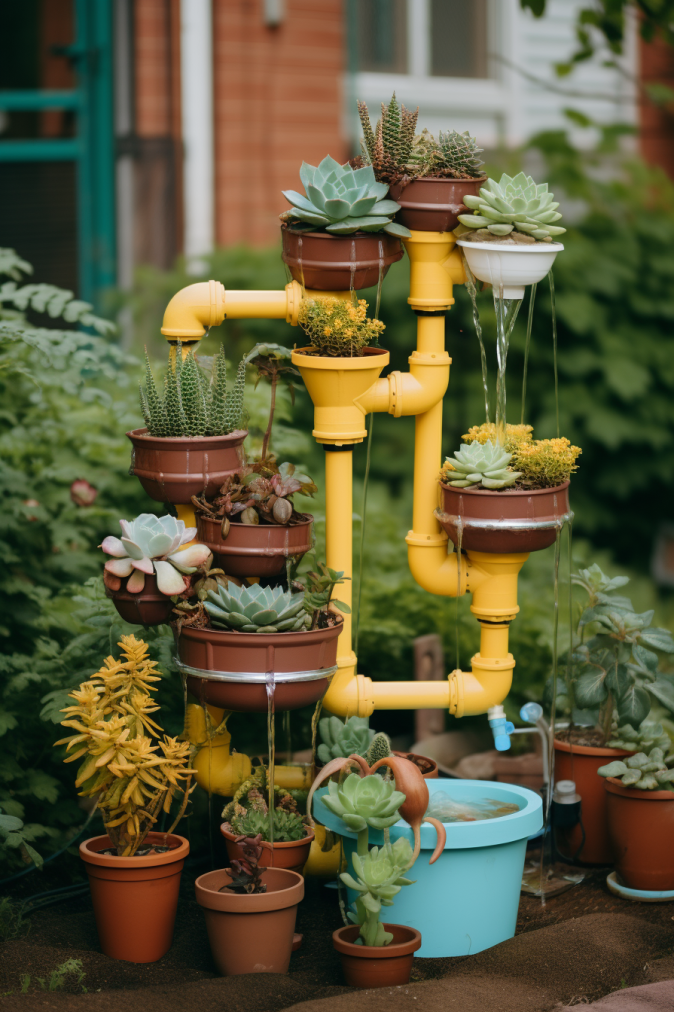
Water Conservation: Self-watering systems minimize water waste by delivering moisture directly to the plant roots.
- Time-saving: Once established, these systems reduce the frequency of manual watering, making plant care more convenient.
- Plant health: Consistent moisture levels promote healthier, more vibrant plants, especially during hot weather.
- Environmentally sustainable: Self-watering systems are built to conserve water and distribute it in just the right amount at the right time, reducing the need for sprinklers or hoses.
- Customizable: DIY watering systems can be tailored to suit your specific needs and preferences, allowing you to create a unique solution for your outdoor potted plants.
Conclusion
Creating a custom watering system for your outdoor potted plants can significantly simplify plant care while promoting healthier, more vibrant greenery.
By following these steps and customizing the system to suit your specific needs, you can enjoy the benefits of a low-maintenance, efficient watering solution.
Incorporating a self-watering system or drip irrigation into your outdoor plant care routine can be a game-changer, offering time-saving benefits and promoting healthier, more vibrant greenery.
By following these steps and customizing the system to suit your specific needs, you can enjoy the benefits of a low-maintenance, efficient watering solution.
By incorporating a self-watering system or drip irrigation into your outdoor plant care routine, you can enjoy the benefits of a low-maintenance, efficient watering solution that promotes healthier, more vibrant greenery.
- Read also: DIY Plant Watering Bottle Ideas
- Read also: A Comprehensive Guide: Hanging Plant Watering System

